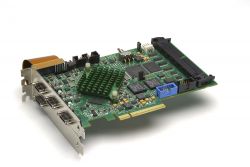IFR: China Seeking to Join the Top 10 Robotics Nations by 2020
By then, its robot density is targeted to rise to 150 units – this being the number of industrial robots per 10,000 employees (2015: 36 units).
FRANKFURT, Germany & SHANGHAI--(BUSINESS WIRE)--China wants to make the leap into the Top 10 of the world's most intensively automated nations by 2020. By then, its robot density is targeted to rise to 150 units - this being the number of industrial robots per 10,000 employees (2015: 36 units). The aim is to sell a total of 100,000 domestically produced industrial robots every year by 2020. This goal was declared by Wang Ruixiang, President of the China Machinery Industry Federation, speaking at the "China International Summit of Robot Industry" in Shanghai. With a robot density of 36 units, China is currently ranked 28th in the world. So says the World Robot Statistics, issued by the International Federation of Robotics (IFR).
The Chinese market for industrial robots continues to be strongly influenced by imports. Foreign manufacturers make up a market share of 69 percent. However, domestic competitors are currently increasing their market share significantly. Within two years, the sales volume posted by Chinese manufacturers has risen from 25 percent in 2013 to the most recent figure of 31 percent. The Beijing government is promoting the rapid expansion of automation, through its reform agenda entitled "Made in China 2025". "By the end of 2020, I reckon that the share of the domestic market enjoyed by Chinese robotic manufacturers could well increase to 50 percent", said Dr. Daokui Qu, CEO of the Chinese robot maker Siasun, at the recent IFR CEO Round Table in Munich.
Asia registered the world's highest sales figures for 2015; at 156,000 units this represented a rise of 16 percent in comparison to the previous year. The regions largest individual markets were China (67,000 units), followed by South Korea (37,000 units) and Japan (35,000 units). The five markets of China, South Korea, Japan, the USA and Germany account for around three quarters of global robot sales.
"Digital information and automation will continue to drive the success story of robotics - it really is a transformation", says Joe Gemma, President of the International Federation of Robotics. "It is driven in particular by industry 4.0, the industrial internet of things and services."
VIDEO download: IFR CEO Round Table Statements 2016
http://tinyurl.com/ph844wf
The International Federation of Robotics: www.ifr.org
Featured Product

